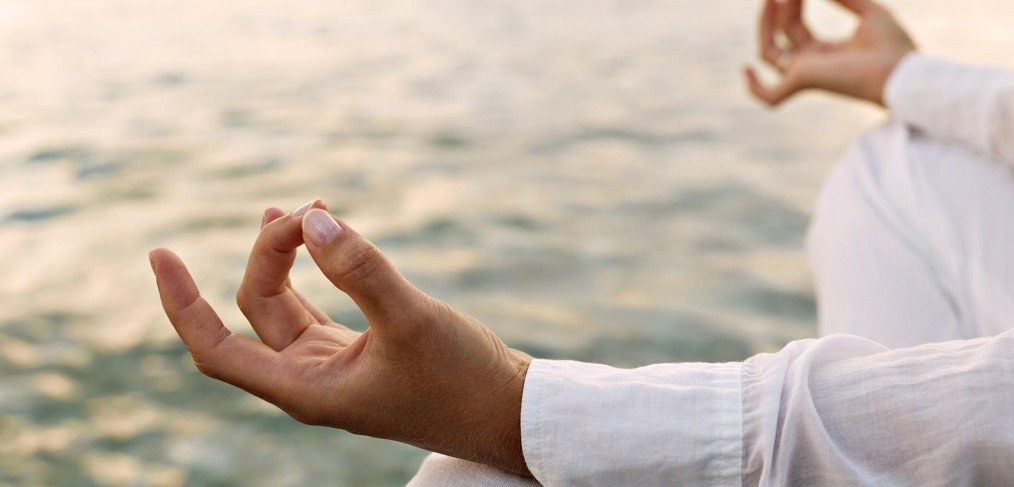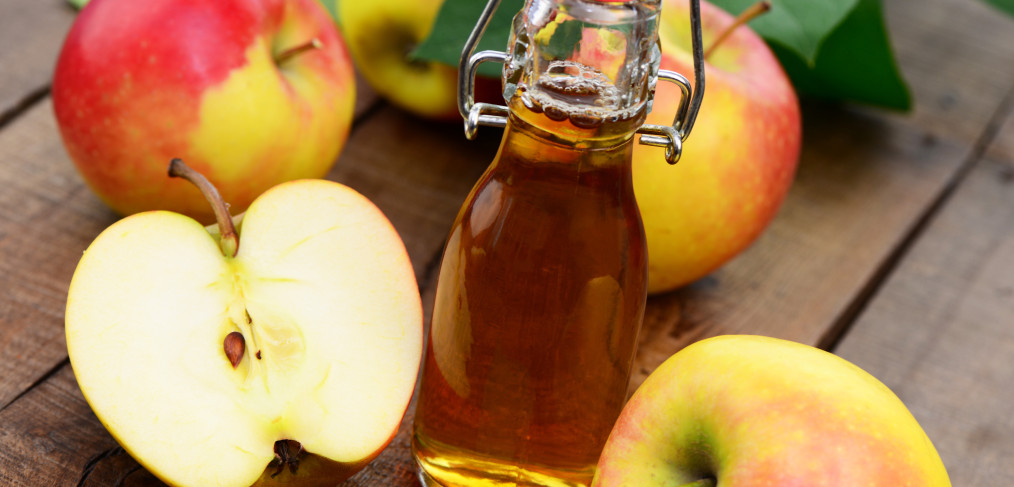How do we learn to trust ourselves? How do we learn to connect with our intuition and inner knowing? How do we separate projections or wishful thinking from genuine intuition and inner knowing? How do we connect to our own unique purpose?
The key lies in reconnecting to the energetic and cellular matrices of the body. We are already disconnected from nature and Her cycles, and have been for thousands of years. In this day and age, technology and computerization have disconnected us even more from our own bodies as well. Many people are now merely “walking brains”. They’re successful in matrix terms, but – having lost body sensitivity, inner guidance and connection to “spirit” – they’ve become mere cogs in a giant machine, without even realizing it.
Observe our current collective living conditions: most of us live in crowded cities, bombarded with EMF pollution and affected by the vibration/frequencies which others emit in close proximity to us (in far more ways and patterns than we could ever imagine). For empaths and very sensitive people, these environments can be extremely overwhelming, as such individuals feel what others feel – especially subtle levels of pain and suffering which non-empaths are not even aware of, due to such emotions being hidden behind a social buffer, built up over years of armoring tactics; because being sensitive and vulnerable is seen as “weak” within our society, driven as it is by a cultural addiction to material success and governed by a ‘dog-eat-dog’ attitude.
Spending Time in Nature
Under such circumstances, it can become confusing to identify what it is that we are truly feeling at any given time – is this reaction coming from me or the other person? That’s been my struggle for nearly my entire life. It was not until I moved into nature, surrounded by trees and wildlife – a place where I don’t even have cell phone reception – that I was able to become (literally and energetically) more grounded. I now see more and more people drawn to living in nature/more natural areas. That’s an instinctual reaction for people who are sensitive to the energetic cosmic changes taking place in the here and now. However, not everyone is in a position to just move back to nature, especially in cases of family and job situations. But it is still possible to spend more time in nature: going on hikes, camping, canoe trips, or merely getting away from the overwhelming city frequencies for an afternoon.
 However, most importantly, it is about getting into our bodies, and by that I don’t just mean exercising (i.e., going to the gym, lifting weights, running, cycling, or going to a yoga class to get a tight butt). It’s all well and good to stay “fit”; however, in order to access the body’s wisdom; to plug into our intuition/inner knowing; and to become more sensitive to nature’s signs and messages (which are always trying to speak to us), it requires a commitment to engage in more conscious movement exercises, where the focus is “inside”. Such activities allow us to become deeply aware of the more subtle bodily sensations we possess, and to re-establish a connection with the energy body which lies beyond our physical body.
However, most importantly, it is about getting into our bodies, and by that I don’t just mean exercising (i.e., going to the gym, lifting weights, running, cycling, or going to a yoga class to get a tight butt). It’s all well and good to stay “fit”; however, in order to access the body’s wisdom; to plug into our intuition/inner knowing; and to become more sensitive to nature’s signs and messages (which are always trying to speak to us), it requires a commitment to engage in more conscious movement exercises, where the focus is “inside”. Such activities allow us to become deeply aware of the more subtle bodily sensations we possess, and to re-establish a connection with the energy body which lies beyond our physical body.
Qi Gong, yoga, bodywork and dance are great practices to get into the body in a more conscious way. Having practiced yoga for 17 years and Qi Gong for 10 years, I can hardly put into words how effective these disciplines are – the key is to do them on a consistent basis. It is, of course, important to learn the basics from a teacher and go to classes; however, at some point (as you learn more about your own unique body-mind make-up and listen to the clues your body is giving you) you can step into your own space and create your own practice at home.
“There is a wisdom in the body, a wisdom in feeling, that when accessed and allowed to operate in conjunction with our cognitive capacities, leads to a deeper, wiser, more integrated life. So we need to get back to the body, which involves much more than just dropping it off at yoga classes or fitness facilities or medical offices. We can get our body more flexible, more fit, and more powerful, and we can load it up with the finest supplements and organic fare, and still be out of touch with it.
Getting back to the body means doing whatever is needed to cut through our disembodied experience, which in part means a journey into and through the very pain that first drove us to dissociate from our body. In permitting a fuller, saner embodiment of our essential nature, we make possible a deeper life for ourselves, a life in which we cannot help but breathe integrity into our stride, and develop a deep intimacy with all that we are.” – Robert Augustus Masters
Yoga and Qi Gong
There are many different forms of yoga and Qi Gong, and as a result it can be easy to get lost in the traditions and dogma of these practices. There is no need to mystify them, nor do I even see these practices as “spiritual”. After all these years, I still don’t know the Sanskrit names of most yoga poses, or the traditional names for the many Qi Gong sequences. At this point in my journey, I let my body be the guide and just feel my way into it. I also feel it’s not necessary to do a 90 minute class all of the time. Even doing 20 minutes every day is more effective than going to a class once or twice a week. But it takes practice, commitment and patience.
 Once you are more connected to your body, you will know what kinds of practices, poses or movements are best for you. Usually, they are the ones you resist doing the most. It’s also not about being flexible, nor does being flexible mean that you are a great yogi. If that were the case, any Cirque Du Soleil acrobat would be an “enlightened” being. Rather, it’s about finding your own edge and limitations, and working with these challenges without judgment or comparing yourself to others.
Once you are more connected to your body, you will know what kinds of practices, poses or movements are best for you. Usually, they are the ones you resist doing the most. It’s also not about being flexible, nor does being flexible mean that you are a great yogi. If that were the case, any Cirque Du Soleil acrobat would be an “enlightened” being. Rather, it’s about finding your own edge and limitations, and working with these challenges without judgment or comparing yourself to others.
It’s also not necessary to perform (or know) hundreds of different poses/movements. As Bruce Lee said, in reference to the martial arts: “I’m not afraid of the one who knows 1,000 different moves, but of the one who has practiced one move a thousand times”. My Qi Gong practice has remained the same (more or less) for the past 10 years. The more I repeat it, the deeper I’m able to go into meditative states – to the point where I sense my energy body more keenly than my physical body. It has become so integrated into my life that I don’t even have to discipline myself to do it every morning. It has become a part of my life, like eating breakfast. It sustains me, and I feel it is needed for my well-being – it’s as simple as that.
Massage and Bodywork
Bodywork (modalities such as Swedish Massage, Deep Tissue, Esalen Massage, Rolfing, Thai Yoga, Sensory Repatterning, Polarity Therapy, CranioSacral Therapy, etc.) is another very effective way to access the wisdom of our bodies. It is not just luxurious pampering, but a healing art that serves as preventive medicine. It has deep healing effects, helping us to get in communion with our bodies through the mirror of another’s educated touch. We all need nurturing support from time to time, and there are occasions where a qualified bodyworker can help us in more ways than we can help ourselves – not only in relation to physical muscle tension, but also with regards to releasing stuck emotional blockages – including traumas most of us are not even aware of, because we have embedded them deep into our physical vessels via muscle armoring and tension patterning.
Looking at the entirety of existence, everything is made manifest through the ‘latticework’ of universal energy. Our muscles, tissue, organs and bones are carriers of energy and memory, all of which are interrelated and connected to one another. The body is a holistic organism, where nothing is isolated – everything affects us, both physically and energetically, on some level. Any experience we have ever had – even things that happened to us in the past but were forgotten about or we weren’t even aware of – is still held in the body, be it grief, a broken relationship, emotional pain, everyday stress, childhood wounds, injuries and accidents, trauma, etc.. The body stores the experience and does not “forget” about it until the pattern is released through holistic treatment.
 Stress, the most common symptom of modern life, affects the body tremendously, resulting in muscle cramping, bad posture and build up of tension “armor-ing”. Chronic tight muscles are a sign that they are constantly contracting – in other words, they are always working and never relaxed and at ease. This state of hyper-activity alone constantly drains energy from the life force (sometimes referred to as “Qi” or “Chi”) to “keep one going”. It’s like driving a car with the hand brake on; energy can’t freely-flow, and the various areas of the body (muscles, organs, tissue, bones) aren’t getting enough “chi” or “prana” (life-force) to repair and regenerate themselves, resulting in entropy (breakdown/aging). This can lead to negative emotions, tiredness, depression, mental sluggishness, irritation, illness, injuries and overall dis-ease. If the body keeps the stress inside itself instead of releasing it whilst simultaneously getting overloaded with more toxins (unhelpful life habits, poor diet, lack of exercise), the life force is simply not sufficient to keep the body in a healthy condition. The immune system then weakens, which can lead to sickness, injury, chronic pain or even seriously-life-threatening conditions like cancer.
Stress, the most common symptom of modern life, affects the body tremendously, resulting in muscle cramping, bad posture and build up of tension “armor-ing”. Chronic tight muscles are a sign that they are constantly contracting – in other words, they are always working and never relaxed and at ease. This state of hyper-activity alone constantly drains energy from the life force (sometimes referred to as “Qi” or “Chi”) to “keep one going”. It’s like driving a car with the hand brake on; energy can’t freely-flow, and the various areas of the body (muscles, organs, tissue, bones) aren’t getting enough “chi” or “prana” (life-force) to repair and regenerate themselves, resulting in entropy (breakdown/aging). This can lead to negative emotions, tiredness, depression, mental sluggishness, irritation, illness, injuries and overall dis-ease. If the body keeps the stress inside itself instead of releasing it whilst simultaneously getting overloaded with more toxins (unhelpful life habits, poor diet, lack of exercise), the life force is simply not sufficient to keep the body in a healthy condition. The immune system then weakens, which can lead to sickness, injury, chronic pain or even seriously-life-threatening conditions like cancer.
Integrative bodywork heals from a holistic vantage point, and has the potential to be a transformative tool for anyone; it positively harmonizes the body, mind and spirit so as to help with the release of stagnant energy whilst revitalizing an individual’s whole being. Good bodywork practice is both preventive medicine and highly therapeutic, as it has the potential to go to “the root” and heal from a full-spectrum perspective, addressing the cause and not just the symptom. It’s about caring for your body and health, so that disease, injury or illness can’t manifest themselves in your ‘temple’.
In these times of global and cosmic change, healing ourselves is especially essential. Integrative bodywork helps to heal both the body/mind separation and the wounds we have accumulated over years (and lifetimes). Besides these deeper effects, receiving regular bodywork helps to maintain a healthy body, mind and spirit ‘framework’, which will manifest in one’s life in positive ways on a daily basis. Individual sovereignty and global emancipation require a planetary population of healthy human beings.
Music and Dance
Another great way to get into your body, release stuck emotions, and get a good workout at the same time is expressive dance. Not necessarily any form of traditional dance or structured style, but simply free form – just letting your body move to the music and rhythm, and letting go of expectations. There is no wrong or right way to dance – there is only your unique expression.
 Rhythm and music has deeper effects on our physiology than we could possibly comprehend (drumming is a great scientifically-proven healing practice as well). It can speak directly to our inner child, and address deeper emotions held in the body that are occasionally being triggered, depending on the style of music, frequencies and rhythm. Personally, dancing helps me to purge deep-rooted anger and frustration (as well as melancholy and sadness) but it can also allow me to just express joy like a child or get in touch with my sensuality, and release emotions I could not possibly express through words.
Rhythm and music has deeper effects on our physiology than we could possibly comprehend (drumming is a great scientifically-proven healing practice as well). It can speak directly to our inner child, and address deeper emotions held in the body that are occasionally being triggered, depending on the style of music, frequencies and rhythm. Personally, dancing helps me to purge deep-rooted anger and frustration (as well as melancholy and sadness) but it can also allow me to just express joy like a child or get in touch with my sensuality, and release emotions I could not possibly express through words.
5 Rhythms dance practice, founded by Gabrielle Roth, is an amazing free form dance healing art, exploring five basic rhythms: flowing, staccato, chaos, lyrical, and stillness. It draws from indigenous and world traditions using tenets of shamanistic, ecstatic, mystical and eastern philosophy. It also draws from Gestalt therapy, and transpersonal psychology. Fundamental to the practice is the idea that everything is energy, and moves in waves, patterns and rhythms. Roth describes the practice as a soul journey, and says that by moving the body, releasing the heart, and freeing the mind, one can connect to the essence of the soul, the source of inspiration in which an individual has unlimited possibility and potential.
We can also just dance at home alone, putting on our favorite music (or any style that reflects how we feel – any energy we want to express or release) and literally move through our process. I like to dance when taking breaks from reading/writing as well; it’s healthy to get off the chair and re-inhabit the body. Sometimes, after having done Qi Gong and meditation, I just put on some music and start to dance, getting even more deeply into what came up for me in the other practices; in the grip of sonic patterns, I fully embrace the sensations, and commit to how I feel… whatever else comes up, I let it all out, expressing it through my body (and sometimes voice) as I move to the sound and rhythm. I literally sweat it all out, and feel amazing afterwards – calm and grounded.
Yoga, Qi Gong, meditating/hiking in nature, bodywork, and dance have helped me over the years to get in touch with my body, emotions and essentially my intuition and inner knowing – the “treasures” of our physical vessel-that-we-are. There have been many times where I’ve received deeper insights and revelations during these practices, helping me to clear out the “interior junk” and thus to connect to my higher self, anchoring a more expanded frequency of love and compassion for myself and others.
These are simple ways and tools that can help us to access our intuition, get out of our heads and into our bodies, and open pathways for higher frequencies to anchor within our holographic mainframes, while at the same time initiate healing on a deeper, embodied level. There are many other movement therapies and practices which enable people to access the body-mind “bridge”. Choose what works and resonates with you on a personal level – what I share here is simply what works for me.
The more we develop body sensitivity (and listen to the clues our body is constantly giving us), the greater the degree to which we can also process negative emotions in a more efficient manner whilst simultaneously anchoring a higher frequency/vibration. Most people have a hard time with working through crisis because they have built up a deep-seated emotional armor, and have become desensitized, disassociated or unconsciously repressed (with regards to what needs to be released). Modern life and technology – with people glued to their smart phones and computers – keeps them disconnected from their bodies, their intuition and their inner guidance system. So we need to make conscious efforts to disconnect from the outside world at times, and go inside to re-establish the connection with stillness.
www.choki.org
Follow us on Facebook!
Author: Bernhard Guenther – Wake Up World









